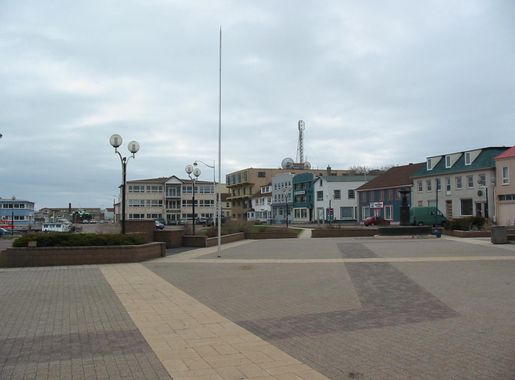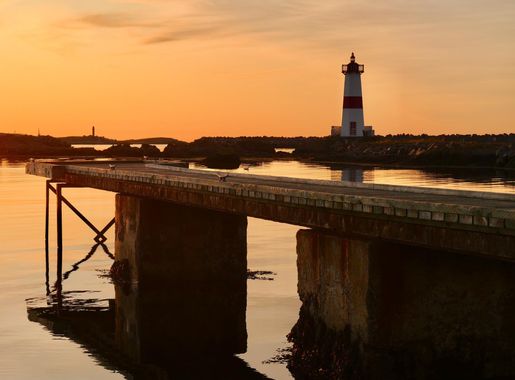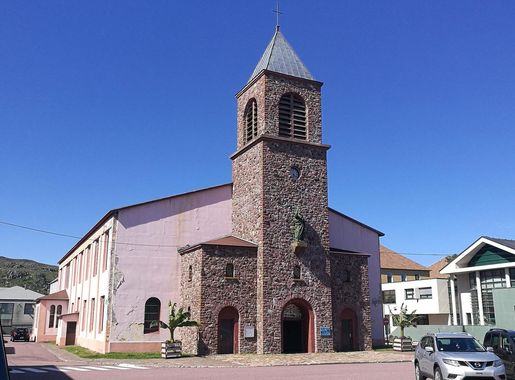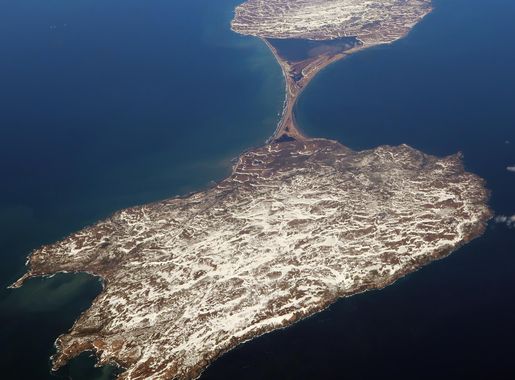
Saint-Pierre: The Charming French Enclave in North America
Explore the unique blend of French culture and North American charm in the picturesque town of Saint-Pierre, nestled in the North Atlantic Ocean.
Saint-Pierre, a picturesque town in Saint Pierre and Miquelon, offers a unique blend of French culture and North American charm. Nestled in the North Atlantic Ocean, this small archipelago is a French overseas territory, making it a truly unique destination for travelers seeking an off-the-beaten-path experience. The town of Saint-Pierre is known for its colorful houses, quaint streets, and friendly locals. As you stroll through the town, you'll find a delightful mix of French and local influences in the architecture, cuisine, and everyday life. Don't miss the local bakeries offering fresh baguettes and pastries, a nod to the island's French heritage. History buffs will appreciate the town's many museums and historical sites, such as the Archipelitude Museum, which showcases the rich maritime history of the region, and the Cathedral of Saint-Pierre, a beautiful example of French colonial architecture. For outdoor enthusiasts, the surrounding natural beauty offers plenty of opportunities for hiking, bird watching, and exploring the rugged coastline. Saint-Pierre is also an excellent base for exploring the rest of the archipelago. A short ferry ride will take you to Miquelon, where you can experience more of the islands' unique culture and natural beauty. Whether you're looking to immerse yourself in French culture or simply enjoy the tranquility of a remote island getaway, Saint-Pierre in Saint Pierre and Miquelon is a destination that promises to captivate and enchant.
Local tips in Saint-Pierre
- Bring Euros as they are the official currency, and credit card acceptance can be limited.
- Learn a few basic French phrases to enhance your experience, as French is the primary language spoken.
- Visit in the summer months for the best weather and to participate in local festivals.
- Try the local seafood, especially the fresh lobster and cod, which are specialties of the region.
- Book accommodations and ferries in advance, as options can be limited, especially during peak tourist season.
Saint-Pierre: The Charming French Enclave in North America
Saint-Pierre, a picturesque town in Saint Pierre and Miquelon, offers a unique blend of French culture and North American charm. Nestled in the North Atlantic Ocean, this small archipelago is a French overseas territory, making it a truly unique destination for travelers seeking an off-the-beaten-path experience. The town of Saint-Pierre is known for its colorful houses, quaint streets, and friendly locals. As you stroll through the town, you'll find a delightful mix of French and local influences in the architecture, cuisine, and everyday life. Don't miss the local bakeries offering fresh baguettes and pastries, a nod to the island's French heritage. History buffs will appreciate the town's many museums and historical sites, such as the Archipelitude Museum, which showcases the rich maritime history of the region, and the Cathedral of Saint-Pierre, a beautiful example of French colonial architecture. For outdoor enthusiasts, the surrounding natural beauty offers plenty of opportunities for hiking, bird watching, and exploring the rugged coastline. Saint-Pierre is also an excellent base for exploring the rest of the archipelago. A short ferry ride will take you to Miquelon, where you can experience more of the islands' unique culture and natural beauty. Whether you're looking to immerse yourself in French culture or simply enjoy the tranquility of a remote island getaway, Saint-Pierre in Saint Pierre and Miquelon is a destination that promises to captivate and enchant.
When is the best time to go to Saint-Pierre?
Iconic landmarks you can’t miss
Ark Museum
Explore the heritage of St. Pierre & Miquelon at the Ark Museum, where history, culture, and fascinating artifacts await every visitor.
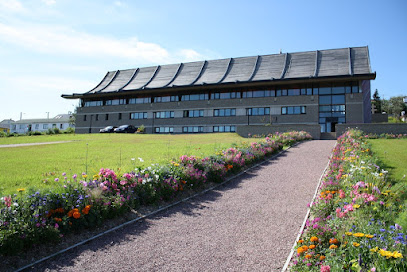
Heritage Museum
Discover the rich history and unique culture of St. Pierre & Miquelon at the Heritage Museum, a captivating tourist attraction for all ages.
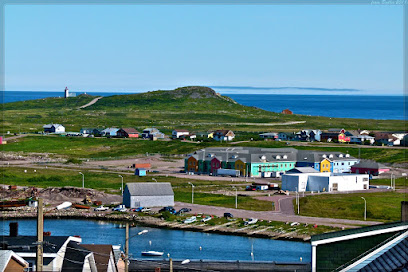
Cathedral of Saint Pierre at Saint Pierre et Miquelon
Discover the spiritual heart of Saint Pierre et Miquelon at the Cathedral of Saint Pierre, a stunning architectural gem steeped in history and culture.
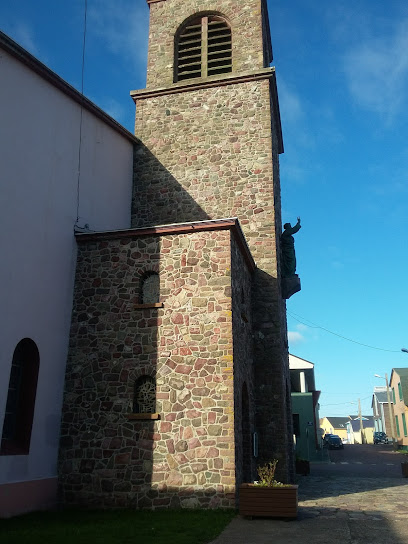
Saint Pierre Island
Experience the charm of Saint Pierre Island, where French culture meets stunning natural landscapes in an unforgettable adventure.
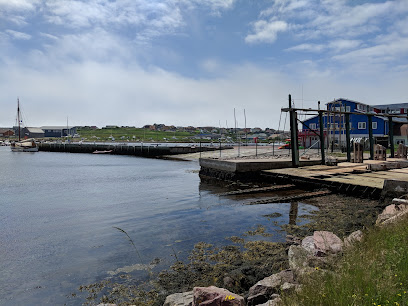
Nature Interpretation Center
Explore the Nature Interpretation Center in St. Pierre & Miquelon, where nature meets education in a stunning natural setting.
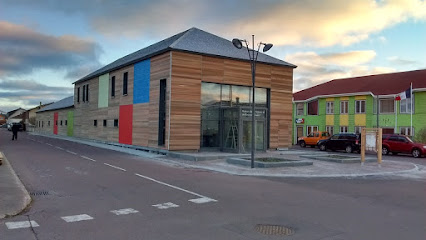
Tourist Office of Saint-Pierre and Miquelon
Explore Saint-Pierre and Miquelon with expert guidance from the Tourist Office—your essential stop for maps, tips, and local insights.
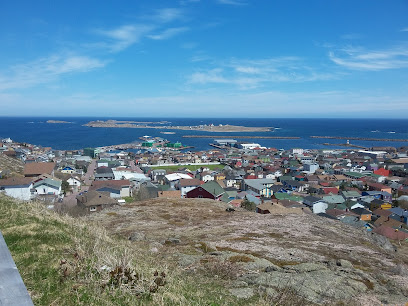
Observatoire de l'Anse à Pierre
Discover the breathtaking views and tranquility at Observatoire de l'Anse à Pierre, a serene rest stop in the heart of Saint-Pierre, St. Pierre & Miquelon.
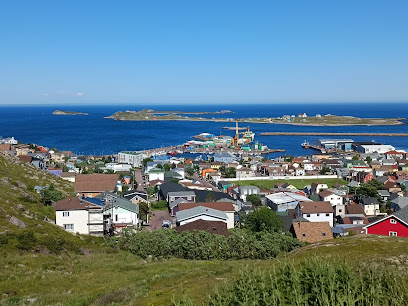
Archipélitude Museum
Explore the captivating maritime heritage of St. Pierre & Miquelon at the Archipélitude Museum, where history comes alive on Île aux Marins.
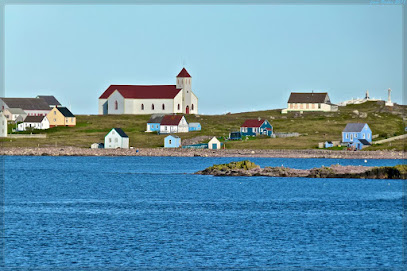
Monument aux morts
Explore the Monument aux Morts in Saint-Pierre, a poignant historical landmark honoring the sacrifices of those who served their country.
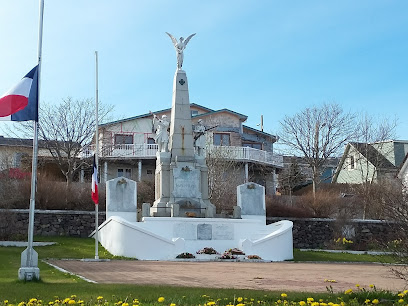
Cap Blanc Lighthouse
Discover the breathtaking views and rich maritime history at Cap Blanc Lighthouse, a must-see landmark in St. Pierre & Miquelon.
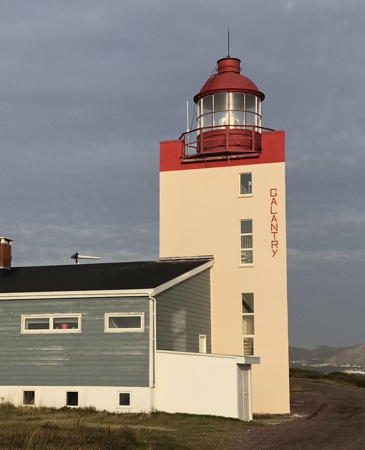
Centre pénitentiaire de Saint-Pierre et Miquelon
Explore historical narratives at the Centre pénitentiaire de Saint-Pierre et Miquelon, an emblem of the islands' intriguing past.

Le Caillou Blanc
Discover the breathtaking sights and rich culture of St. Pierre & Miquelon with Le Caillou Blanc's expert-guided tours.
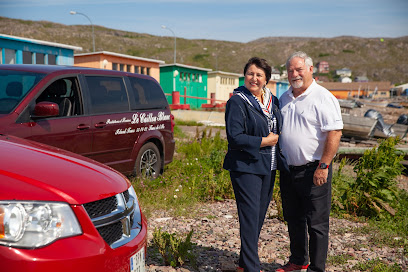
Unmissable attractions to see
Cathedral of Saint Pierre at Saint Pierre et Miquelon
Discover the architectural beauty and spiritual significance of the Cathedral of Saint Pierre, a cultural gem in the heart of Saint Pierre et Miquelon.

Saint Pierre Island
Experience the unique blend of French culture and natural beauty on Saint Pierre Island, your gateway to a serene North Atlantic getaway.
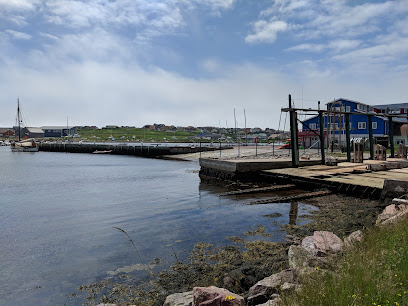
Micro-Folie Saint-Pierre
Explore the artistic soul of St. Pierre & Miquelon at Micro-Folie, where history and creativity converge in a unique museum experience.
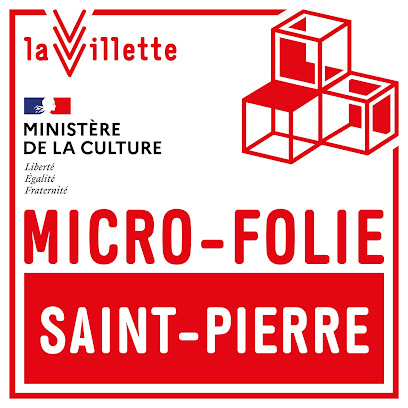
Essential places to dine
Le Feu de Braise
Indulge in gourmet pizzas at Le Feu de Braise - where every bite is a delicious experience in Saint-Pierre.
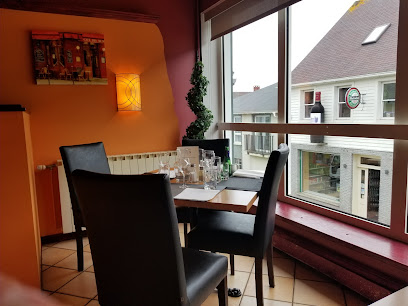
Les P'tits Graviers
Discover authentic local cuisine at Les P'tits Graviers in Saint-Pierre - where every dish tells a story.
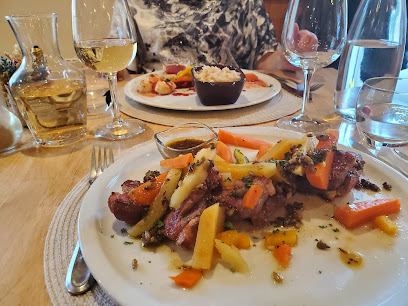
Le Select
Experience authentic St. Pierre cuisine at Le Select - where local flavors meet exceptional dining in a cozy atmosphere.
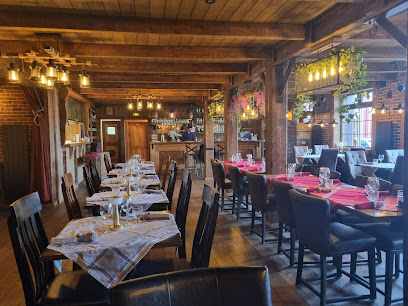
Café de la gare
Experience delightful dining at Café de la Gare in Saint-Pierre—where local flavors meet international cuisine in a cozy atmosphere.
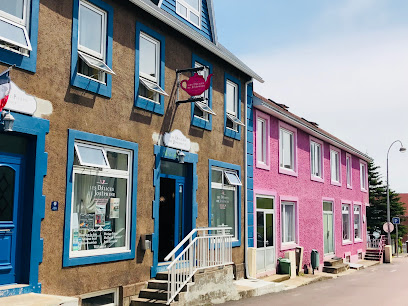
Snack Bar-to-Choice
Experience the best of local cuisine at Snack Bar-to-Choice in Miquelon – where every meal tells a story of flavor.
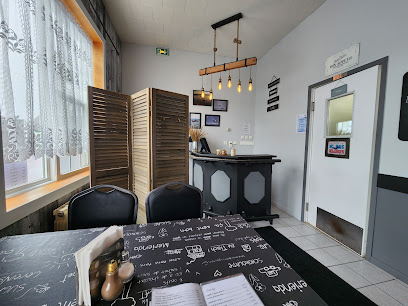
2 Lapins
Experience the authentic flavors of St. Pierre & Miquelon at 2 Lapins – where local cuisine meets cozy ambiance.
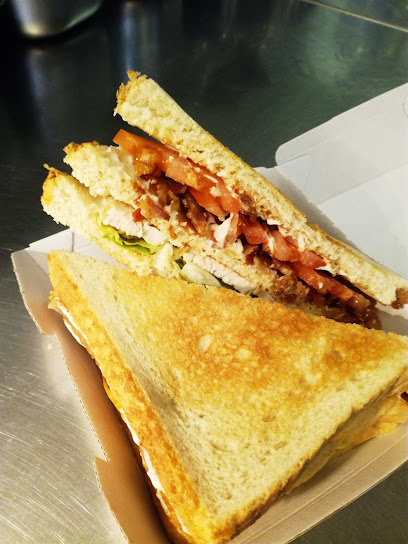
Entre Nous Restaurant
Discover authentic French cuisine at Entre Nous Restaurant in Miquelon—where delightful flavors meet vibrant nightlife.
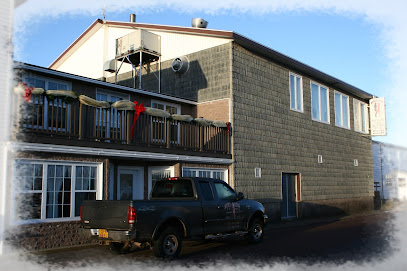
Pizzéria Chez Alain
Experience authentic Italian flavors at Pizzéria Chez Alain in Saint-Pierre - a culinary gem serving delicious pizzas made with love.
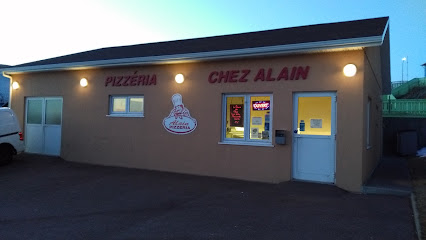
Le Bar à Quai
Discover authentic flavors at Le Bar à Quai, where local seafood meets warm hospitality in beautiful Saint-Pierre.
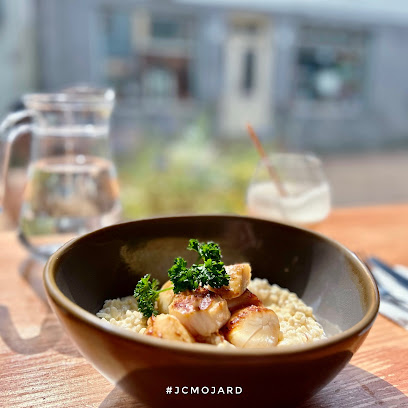
The Jezequel House
Experience authentic local cuisine at The Jezequel House in Ile aux Marins – where tradition meets taste in a breathtaking coastal setting.
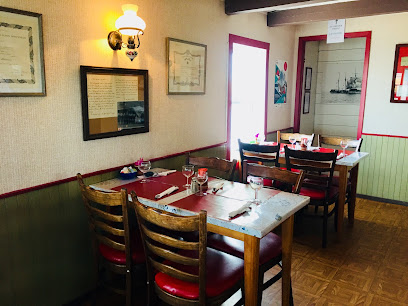
Artisanal brewery at the bottom of the Anse
Experience locally crafted brews with stunning views at this artisanal brewery nestled in beautiful Saint-Pierre-et-Miquelon.
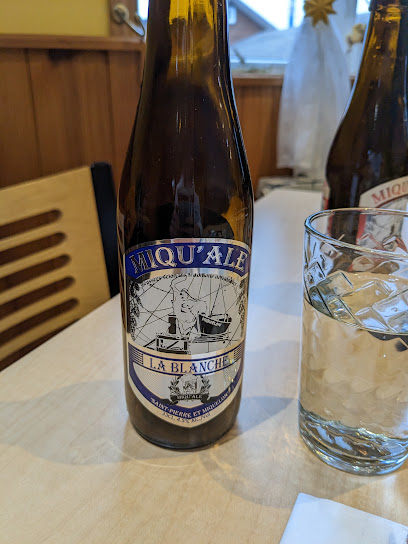
L'Ilot
Discover L'Ilot in St. Pierre & Miquelon: where local flavors meet exquisite dining amidst stunning coastal views.
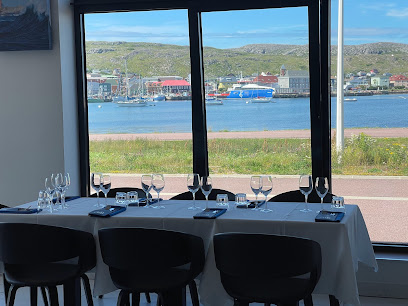
Le Buddy
Discover exquisite local cuisine at Le Buddy in Saint-Pierre - where every dish tells a story.
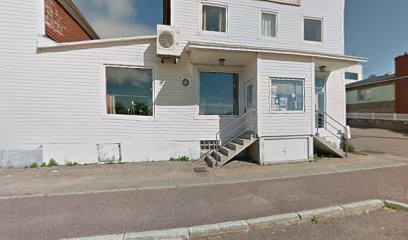
Le marhaba
Experience authentic local cuisine at Le Marhaba, a charming caterer and takeout restaurant in Saint-Pierre offering delicious meals made from fresh ingredients.
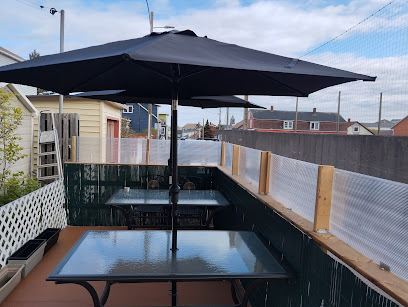
Restaurant Ile de France
Discover authentic French cuisine at Restaurant Ile de France in Saint-Pierre - where every dish tells a story.
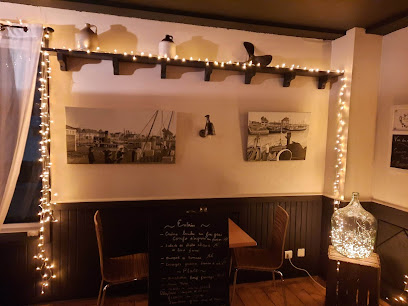
Markets, malls and hidden boutiques
Centre de Rénovation Marcel Dagort S.A.R.L.
Explore Centre de Rénovation Marcel Dagort in Saint-Pierre et Miquelon for top-notch hardware and local craftsmanship.
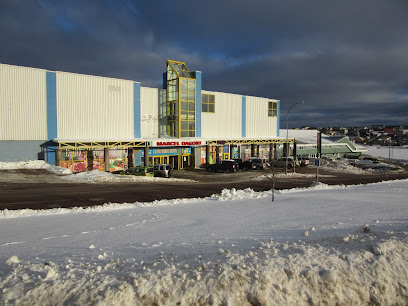
Chez Clochet
Experience local culture at Chez Clochet, the charming general store in Saint-Pierre, offering unique products and authentic island flavors.

Ré-Créations - Parfumerie & Cadeaux
Explore the enchanting Ré-Créations Parfumerie & Cadeaux in Saint-Pierre for unique gifts and exquisite local perfumes that capture the essence of the islands.
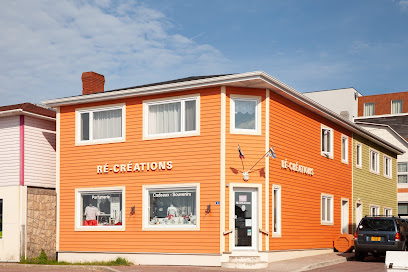
Au Panier Boréal Sas
Discover the organic flavors of St. Pierre at Au Panier Boréal, a charming deli offering local delicacies and gourmet delights.
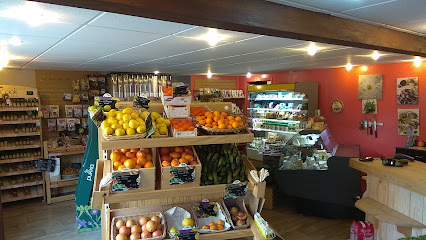
The Cellar pulls plug
Explore a world of exquisite wines at The Cellar in Saint-Pierre, where every bottle tells a story and every visit is a new experience.
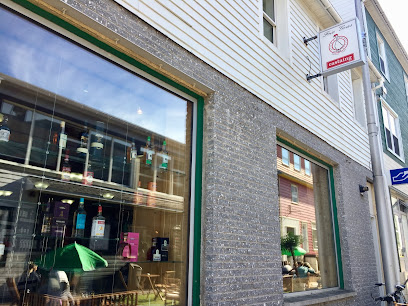
Victoire&Léon
Discover unique fashion pieces for every age at Victoire&Léon in Saint-Pierre, your go-to clothing store for local style and quality.
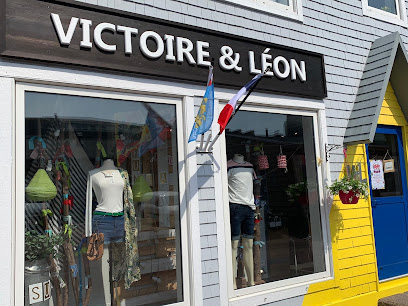
Bernie's
Discover the heart of Saint-Pierre at Bernie's grocery store—your go-to spot for local flavors and friendly service.

Épicerie fine 4 épice
Explore the exquisite flavors of Saint-Pierre at Épicerie fine 4 épice, your go-to gift shop for gourmet products and local delicacies.
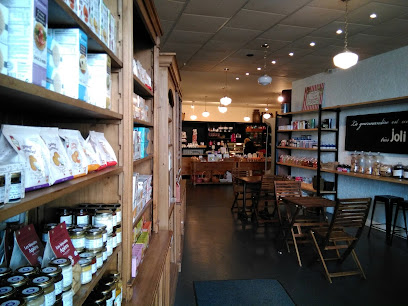
Indigo Déco - Indigo Jouets
Discover a unique shopping experience at Indigo Déco, where exquisite furniture meets enchanting toys in St. Pierre.
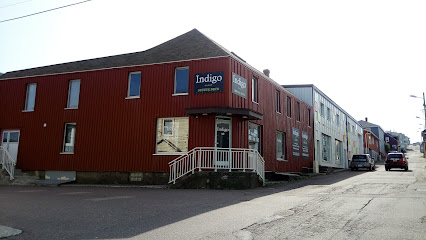
JouéClub
Explore JouéClub in Saint-Pierre for an enchanting selection of toys and games that inspire joy and creativity for all ages.

Maison Hélène
Explore the charm of Maison Hélène, a boutique clothing store in Saint-Pierre offering unique local fashion and personalized service for every traveler.
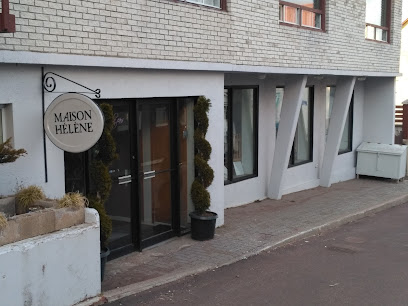
At Danielle's
Explore the flavors of Saint-Pierre at At Danielle's - a charming grocery store offering local and international delights for every taste.

Click
Explore the best gift shop in Saint-Pierre, offering unique souvenirs, stylish clothing, and delightful treasures for every visitor.
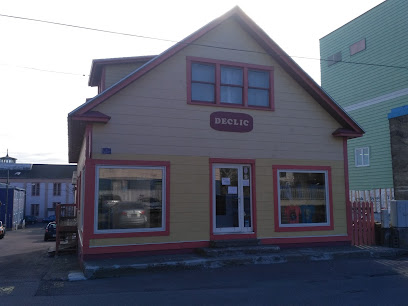
X Sports
Discover adventure at X Sports, the ultimate sporting goods store in Saint-Pierre, where outdoor enthusiasts find everything they need for their next adventure.

Free Cartier
Explore Free Cartier, your go-to gift shop in Saint-Pierre for unique souvenirs and local treasures from St. Pierre & Miquelon.
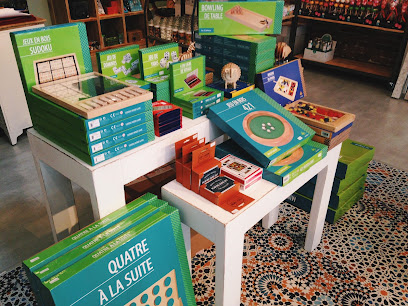
Essential bars & hidden hideouts
Le Feu de Braise
Experience the vibrant culinary scene of Saint-Pierre at Le Feu de Braise, where delicious pizzas and a warm atmosphere await every visitor.
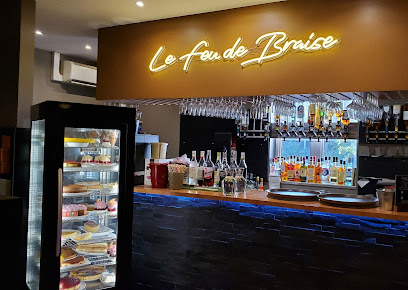
Les P'tits Graviers
Experience the vibrant culinary scene of Saint-Pierre at Les P'tits Graviers, where local flavors meet inviting hospitality.
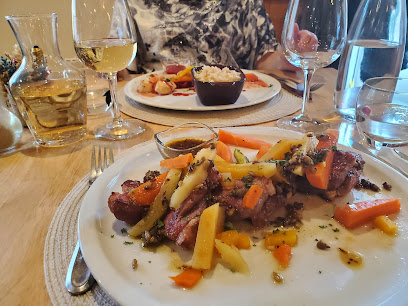
Bar Le Rustique
Discover the vibrant atmosphere of Bar Le Rustique in Saint-Pierre, where local culture and delightful beverages blend seamlessly for an unforgettable experience.
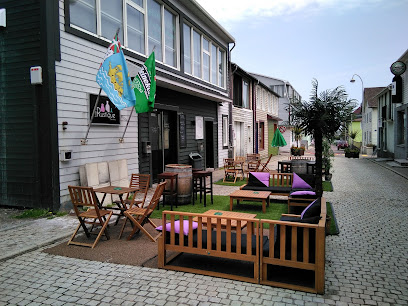
Le Select
Experience the taste of St. Pierre & Miquelon at Le Select, where local flavors and fresh ingredients create unforgettable meals.

Complexe Hôtelier Les Terrasses du Port
Discover the perfect blend of luxury and relaxation at Complexe Hôtelier Les Terrasses du Port in Saint-Pierre & Miquelon, where every moment is a retreat.
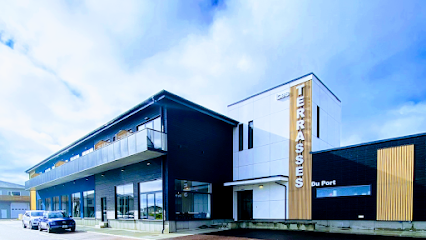
Café de la gare
Experience the vibrant flavors of Saint-Pierre at Café de la Gare, where local ingredients meet cozy ambiance in a delightful dining experience.
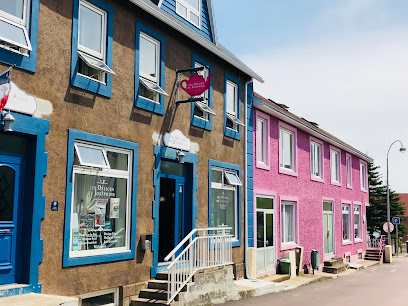
Nuits Saint-Pierre, Hôtel Unique
Experience the charm of St. Pierre & Miquelon at Nuits Saint-Pierre, Hôtel Unique—your gateway to serenity and local culture.
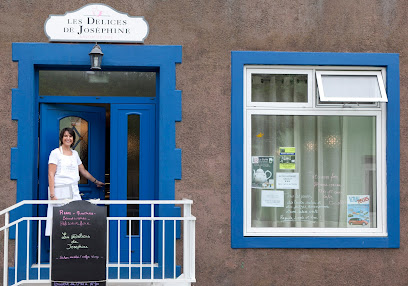
2 Lapins
Discover the authentic flavors of St. Pierre & Miquelon at 2 Lapins, a charming restaurant and coffee shop perfect for every palate.

Chez Txetxo
Discover the vibrant atmosphere of Chez Txetxo, a beloved bar in Saint-Pierre offering local drinks and a friendly ambiance for all visitors.
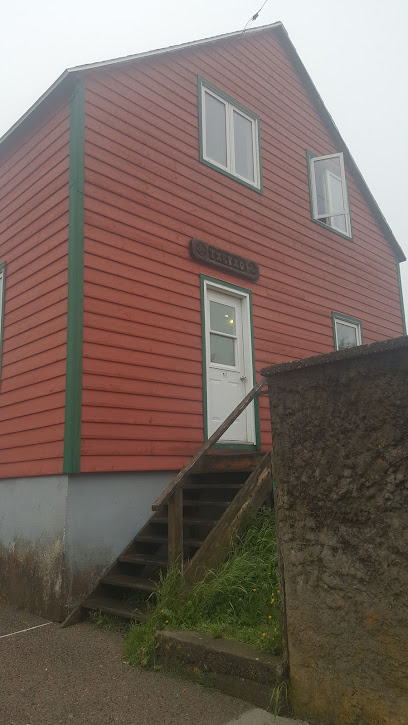
Pizzéria Chez Alain
Discover the taste of Saint-Pierre at Pizzéria Chez Alain, where every pizza tells a story of local flavor and tradition.
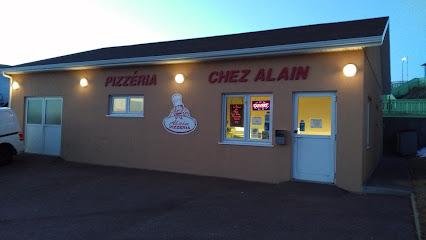
Le Bar à Quai
Discover the flavors of Saint-Pierre at Le Bar à Quai, where fresh seafood meets local culinary traditions in a charming harbor setting.
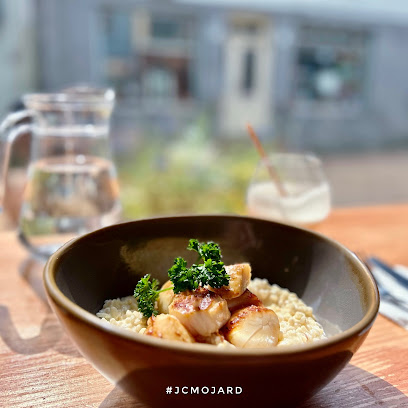
Le Baratin
Discover the charm of Le Baratin in Saint-Pierre, where cozy ambiance meets a vibrant selection of local beverages.

Chez Janot
Discover the vibrant atmosphere and local flavors at Chez Janot, a charming bar in St. Pierre & Miquelon, perfect for tourists and locals alike.
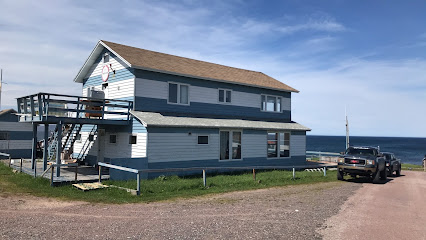
L'Essentiel
Discover the cozy charm of L'Essentiel, a delightful cafe in Saint-Pierre, where every sip and bite is a taste of local culture.

Roc Café
Discover Roc Café, a delightful café in Saint-Pierre offering scrumptious pastries and exceptional coffee in a cozy atmosphere.
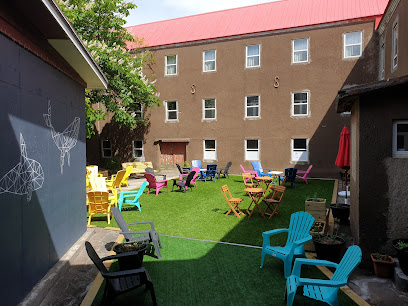
Local Phrases about Saint-Pierre
-
- HelloBonjour
[bon-zhoor] - GoodbyeAu revoir
[oh reh-vwar] - YesOui
[wee] - NoNon
[nohn] - Please/You're welcomeS'il vous plaît / De rien
[seel voo pleh / duh ryen] - Thank youMerci
[mehr-see] - Excuse me/SorryExcusez-moi / Désolé
[ex-kew-zay mwah / deh-zoh-lay] - How are you?Comment ça va?
[koh-mohn sah vah?] - Fine. And you?Bien. Et vous?
[byen. ey voo] - Do you speak English?Parlez-vous anglais?
[par-lay voo ahn-glay] - I don't understandJe ne comprends pas
[zhuh nuh kohm-prahnd pah]
- HelloBonjour
-
- I'd like to see the menu, pleaseJe voudrais voir le menu, s'il vous plaît
[zhuh voo-dray vwar luh men-yoo, seel voo pleh] - I don't eat meatJe ne mange pas de viande
[zhuh nuh mahnj pah duh vyand] - Cheers!Santé!
[sahn-tay] - I would like to pay, pleaseJe voudrais payer, s'il vous plaît
[zhuh voo-dray pay-ay, seel voo pleh]
- I'd like to see the menu, pleaseJe voudrais voir le menu, s'il vous plaît
-
- Help!Au secours!
[oh suh-koor] - Go away!Allez-vous en!
[ah-lay vooz ahn] - Call the Police!Appelez la police!
[ah-pay-lay lah poh-leece] - Call a doctor!Appelez un médecin!
[ah-pay-lay uh may-deh-sahn] - I'm lostJe suis perdu
[zhuh swee pair-doo] - I'm illJe suis malade
[zhuh swee mah-lahd]
- Help!Au secours!
-
- I'd like to buy...Je voudrais acheter...
[zhuh voo-dray zheh-tay] - I'm just lookingJe regarde simplement
[zhuh ruh-gard sahm-pluh-mahn] - How much is it?Combien ça coûte?
[kohm-byen sah koot] - That's too expensiveC'est trop cher
[say troh shair] - Can you lower the price?Pouvez-vous baisser le prix?
[poo-vay voo bay-say luh pree]
- I'd like to buy...Je voudrais acheter...
-
- What time is it?Quelle heure est-il?
[kell ur ay-teel] - It's one o'clockIl est une heure
[eel ay oon ur] - Half past (10)Dix heures et demie
[dees ur ay duh-mee] - MorningMatin
[mah-tahn] - AfternoonAprès-midi
[ah-pray-mee-dee] - EveningSoir
[swahr] - YesterdayHier
[yehr] - TodayAujourd'hui
[oh-zhoor-dwee] - TomorrowDemain
[duh-mahn] - 1Un
[uh] - 2Deux
[duh] - 3Trois
[twah] - 4Quatre
[kat] - 5Cinq
[sank] - 6Six
[sees] - 7Sept
[set] - 8Huit
[weet] - 9Neuf
[nurf] - 10Dix
[dees]
- What time is it?Quelle heure est-il?
-
- Where's a/the...?Où est le/la...?
[oo ay luh/lah] - What's the address?Quelle est l'adresse?
[kell ay luh-dress] - Can you show me (on the map)?Pouvez-vous me montrer (sur la carte)?
[poo-vay voo muh mon-tray (soor lah kart)] - When's the next (bus)?Quand est le prochain (bus)?
[kahn ay luh proh-shahn (bus)] - A ticket (to ....)Un billet (pour ....)
[uhn bee-yay (poor)]
- Where's a/the...?Où est le/la...?
History of Saint-Pierre
-
The archipelago of Saint Pierre and Miquelon was originally inhabited by the Indigenous peoples of the region, including the Beothuk and Mi'kmaq tribes. European contact began in the early 16th century when Basque fishermen discovered the islands. The French claimed the territory in 1536, and it became a strategic fishing base.
-
The islands changed hands multiple times between the French and the British during the 17th and 18th centuries. The Treaty of Utrecht in 1713 temporarily ceded the islands to Britain, but they were returned to France with the Treaty of Paris in 1763. These exchanges were part of larger colonial conflicts between the two European powers.
-
Throughout the 19th century, Saint Pierre and Miquelon thrived as a major hub for the North Atlantic fishing industry. The archipelago's economy was heavily reliant on the cod fishing trade, attracting a diverse population of fishermen from France, Spain, and Portugal.
-
During the United States' Prohibition (1920-1933), Saint Pierre and Miquelon became a notorious center for alcohol smuggling. The islands' proximity to the U.S. made them an ideal staging ground for rumrunners. This period brought a brief economic boom and an influx of American visitors.
-
During World War II, the islands were a point of contention between the Vichy French and Free French forces. In 1941, Free French forces led by Admiral Émile Muselier seized control of the islands, ensuring they remained loyal to Charles de Gaulle's government-in-exile.
-
After World War II, Saint Pierre and Miquelon transitioned from a dependence on the fishing industry to a more diversified economy. The islands became an Overseas Collectivity of France in 1985, giving them greater autonomy while maintaining strong cultural and political ties to the French mainland.
Saint-Pierre Essentials
-
Saint-Pierre is part of the Saint Pierre and Miquelon archipelago, located off the coast of Newfoundland, Canada. The primary way to get there is by air or sea. Air Saint-Pierre offers flights from St. John's, Halifax, and Montreal in Canada. During the summer months, there are also ferry services from Fortune, Newfoundland. Ensure to check the schedules in advance as they can be seasonal and weather-dependent.
-
Saint-Pierre is a small town, making it easy to explore on foot. For longer distances, taxis are available and can be hailed on the street or booked in advance. Car rentals are also an option for those who wish to explore beyond the main town. There is no public bus system, but guided tours are available and can be a convenient way to see the highlights.
-
The official currency is the Euro (EUR). Credit cards are widely accepted in hotels, restaurants, and shops, but it is advisable to carry some cash for smaller establishments and markets. ATMs are available in Saint-Pierre, where you can withdraw Euros.
-
Saint-Pierre is generally a very safe destination for tourists. Crime rates are low, and violent crime is rare. However, as with any travel destination, it's always wise to take standard precautions: keep an eye on your belongings, especially in crowded areas, and avoid walking alone in poorly lit areas at night.
-
In case of emergency, dial 17 for police, 18 for fire services, and 15 for medical emergencies. Saint-Pierre has a hospital with emergency services. It is advisable to have travel insurance that covers medical emergencies. For minor health issues, pharmacies are available in the town.
-
Fashion: Do dress in layers as the weather can be unpredictable. Casual wear is widely accepted but dress modestly when visiting religious sites. Religion: Do respect local religious customs. Public Transport: There is no public bus system, but if using taxis, always be polite and considerate. Greetings: Do greet people with a friendly 'Bonjour' and a handshake. Eating & Drinking: Do try the local cuisine, which has French influences. Don't refuse hospitality, as it is considered impolite.
-
To experience Saint-Pierre like a local, visit the local markets and bakeries early in the morning for fresh goods. Engage with locals, as they are often friendly and willing to share stories about the island's history. Don’t miss the historical sites such as the Musée de l'Arche and the Pointe aux Canons Lighthouse. Participate in local festivals and events, which offer a glimpse into the unique culture of the islands.
Trending Landmarks in Saint-Pierre
-
Ark Museum
-
Heritage Museum
-
Cathedral of Saint Pierre at Saint Pierre et Miquelon
-
Saint Pierre Island
-
Nature Interpretation Center
-
Tourist Office of Saint-Pierre and Miquelon
-
Observatoire de l'Anse à Pierre
-
Archipélitude Museum
-
Monument aux morts
-
Cap Blanc Lighthouse
-
Centre pénitentiaire de Saint-Pierre et Miquelon
-
Le Caillou Blanc
Nearby Cities to Saint-Pierre
-
Things To Do in Saint-Pierre Airport
-
Things To Do in Langlade
-
Things To Do in Miquelon
-
Things To Do in Charlottetown
-
Things To Do in Bar Harbor
-
Things To Do in Acadia National Park
-
Things To Do in Bangor
-
Things To Do in Camden
-
Things To Do in Rockland
-
Things To Do in Waterville
-
Things To Do in Augusta
-
Things To Do in Brunswick
-
Things To Do in Lewiston
-
Things To Do in Quebec City
-
Things To Do in South Portland

